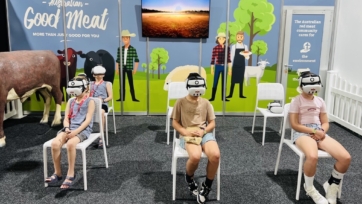Virtual Classrooms: The Resource For Right Now
Virtual Classrooms: The Resource For Right Now
Virtual learning has become the norm in many schools as teachers and students continue to dip in and out of remote education, maximising screen time and minimising human interaction, leading to an increase in the need for engaging learning resources that teachers can trust will support their student’s curriculum-led learning journey. Class teachers are exhausted having to engage their ‘presenter’ personas to keep their students engaged for 6 hours a day, 5 days a week, while also looking for new ways to continuously meet learning objectives.
Here’s where VCs come in:
A virtual classroom is an online space where students from all over the country can meet and learn together. The presenter in the ‘classroom’ is someone other than the regular class teacher, who engages students in an interactive session, underpinned by 2-3 key messages related to curriculum outcomes. Sessions could be supported with a presentation, a quiz and even a guest speaker to provide variety and maximise engagement and interaction with Q&A opportunities.
The key feature of virtual classrooms is their ability to provide an opportunity for students to interact with real-world experts and gain context for learning from outside the classroom. Context is king in modern educational pedagogy (beliefs about teaching and learning) as it provides the why in a world of what, i.e. helps students to understand the reason they are learning specific content.
More than anything, though, they give our hardworking class teachers some time back, as well as the promise of a high quality learning experience for their students.
At Kimberlin, we have been creating VCs for some time now for the likes of Meat and Livestock Australia, Forest Learning, Dairy Australia and Paralympics Australia. These curriculum-linked and exciting VCs have provided students from all around Australia with access to experts, places and content that they may not normally come across in their daily lives.
So how do I create a high quality and engaging VC?
1. Engaging Experts
Think of the best virtual classrooms like a game show, with a high energy presenter and an interesting subject expert. The more interesting the guests, the better the engagement. Our previous VCs with Olympians and Paralympians saw the highest engagement rate ever, with over 1,300 students signing up ready to chat to the pro athletes. Check them out here.
2. Interaction
Interaction isn’t just about talking to your audience. Depending on the age group you want to target, you may wish to use a quiz platform to gamify the session, add photos and videos, or even sing a song. Engagement is as much about variety as it is about divergence from the norm.
3. Further Learning
To highlight the value of your virtual classroom, ensure it fits with the curriculum outcomes of your intended audience in a rich and meaningful way, then extend this learning after the session by providing learning resources for students and teachers to access both in class and at home if necessary. Continued learning is a great way to add value to your virtual classroom and show teachers that it isn’t an isolated experience. Bonus points if your resources span more than one curriculum area showing breadth and integration across core subjects.
Remote learning is tough on teachers and students and your virtual classroom could be the one thing that brightens their week and provides a richer at-home experience, as well as an exciting opportunity to engage with your organisation’s key messages. Right now, an end to remote learning isn’t in sight and teachers are looking for new ways to engage their students and support their education with online resources.
Not sure where to start?
Contact Kimberlin Education and we’ll create an engaging, interactive online experience for your intended audience that teachers and students will find valuable.




